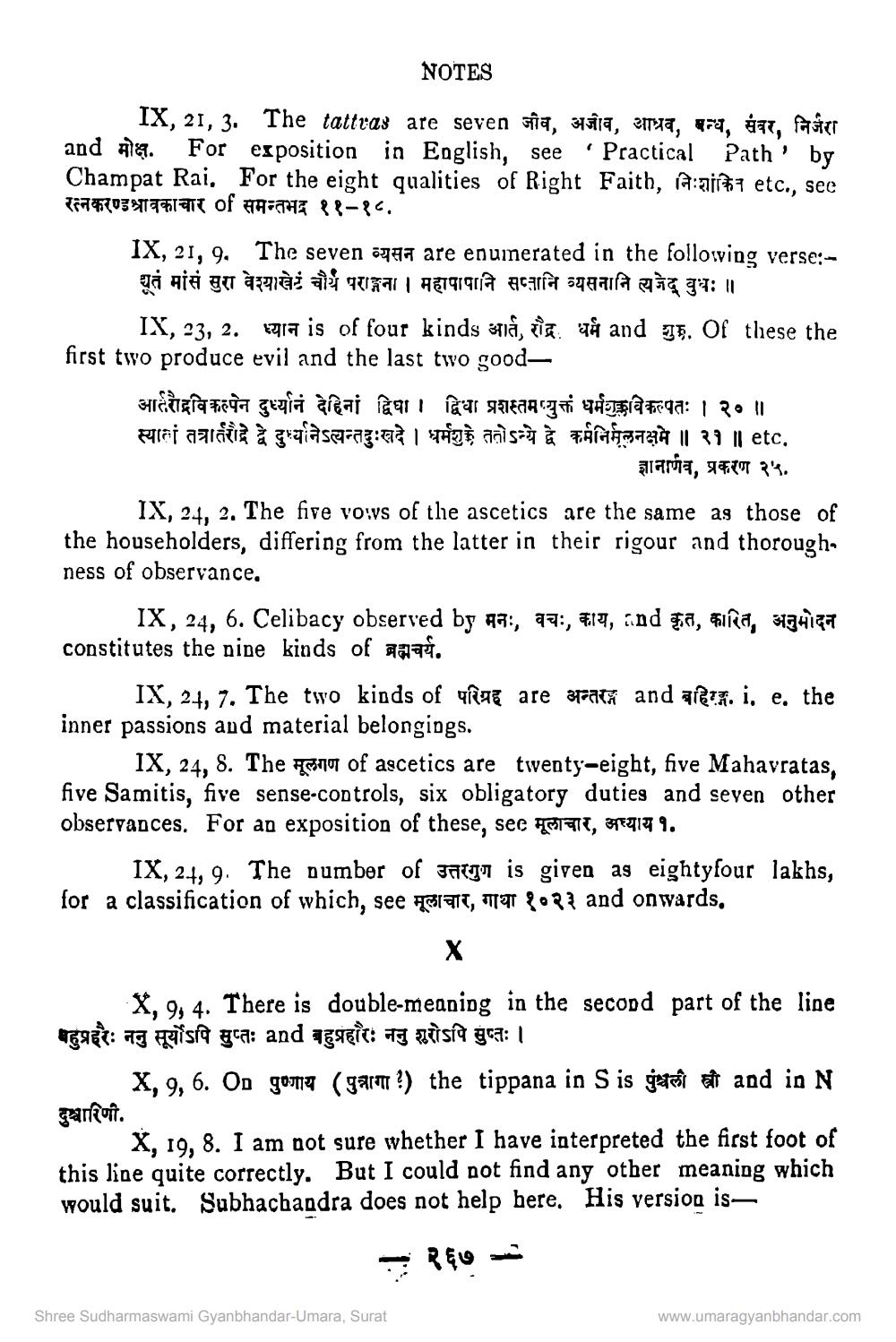________________
NOTES
IX, 21, 3. The tattras are seven जीव, अजीव, आश्रव, बन्ध, संवर, निर्जरा and मोक्ष. For exposition in English, see 'Practical Path' by Champat Rai. For the eight qualities of Right Faith, a etc., see रत्नकरण्ड श्रावकाचार of समन्तभद्र ११-१८.
IX, 21, 9. The seven are enumerated in the following verse:तं मांसं सुरा वेश्याखेटं चौर्य पराङ्गना । महापापानि सप्तानि व्यसनानि त्यजेद् बुधः ॥ IX, 23, 2. ध्यान is of four kinds आर्त, रौद्र धर्म and शुरु. Of these the first two produce evil and the last two good
आरौद्रविकल्पेन दुर्ध्यानं देहिनां द्विधा । द्विधा प्रशस्तमप्युक्तं धर्मशुक्लविकल्पतः ॥ २० ॥ स्यातां तत्रार्तरौद्रे द्वे दुर्ध्यानेऽत्यन्तदुःखदे । धर्मशु के ततोऽन्ये द्वे कर्मनिर्मूलनक्षमे ॥ २१ ॥ etc. ज्ञानार्णव, प्रकरण २५.
IX, 24, 2. The five vows of the ascetics are the same as those of the householders, differing from the latter in their rigour and thorough. ness of observance.
IX, 24, 6. Celibacy observed by a, a, a, and ga, miña, sgdiga constitutes the nine kinds of ब्रह्मचर्य.
IX, 24, 7. The two kinds of area and af. i. e. the inner passions and material belongings.
IX, 24, 8. The of ascetics are twenty-eight, five Mahavratas, five Samitis, five sense-controls, six obligatory duties and seven other observances. For an exposition of these, see it, a 9.
IX, 24, 9. The number of is given as eightyfour lakhs, for a classification of which, see मूलाचार, गाथा १०२३ and onwards.
X
X, 9, 4. There is double-meaning in the second part of the line बहुप्रहरः ननु सूर्योऽपि सुप्तः and बहुप्रहारः ननु शरोऽपि सुप्तः ।
X, 9, 6. On पुण्गाय ( पुत्रागा ! ) the tippana in S is पुंश्चली स्त्री and in N
garkort.
X, 19, 8. I am not sure whether I have interpreted the first foot of this line quite correctly. But I could not find any other meaning which would suit. Subhachandra does not help here. His version is
२६७
Shree Sudharmaswami Gyanbhandar-Umara, Surat
www.umaragyanbhandar.com




